Search the Community
Showing results for tags 'detector tech'.
-
The ads came from mags dating back to 66. I can say I remember them all. Just maybe you remember some if not all. Chuck
-
Hi Steve: Just re-read your "Steve's Guide to Threshold, Autotune..." It helped a lot. Thanks. I do have a question though. I understand V/SAT. It's about how fast autotune re-adjusts the threshold after encountering some disturbance like a target. However, I'm unclear on how that relates to Ground Balancing and Tracking. It sounds like they are the same. Would you please explain that? Thanks
-
If you read between the lines on the various search modes, Minelab seems to imply that the ground balancing is done automagically, regardless of whether you do a ground grab or not. For example: Park 1 Multi-IQ processes a lower frequency weighting of the multi-frequency signal, as well as using algorithms that maximise ground balancing for soil, to achieve the best signal to noise ratio. Hence Park 1 is most suited for general detecting and coin hunting. Park 2 Multi-IQ processes a higher frequency weighted multi-frequency signal while ground balancing for soil. Field 1 Multi-IQ processes a lower frequency weighted multi-frequency signal, as well as using algorithms that maximise ground balancing for soil, to achieve the best signal to noise ratio. Hence being most suited for general detecting and coin hunting. Field 2 Multi-IQ processes a higher frequency weighted multifrequency signal while ground balancing for soil. Beach 1 Multi-IQ processes a low frequency weighted multi-frequency signal, and uses special algorithms to maximise ground balancing for salt. Beach 2 MultiIQ processes a very low weighted multi-frequency combination, using the same algorithms as Beach 1 to maximise ground balancing for salt. Not to be confused with auto tracking, but it appears that the Equinox is doing some ground balancing specific to each search mode irregardless of whether you do a ground grab (auto ground balance in EQ speak) or not. Not that I would skip doing a ground grab, but I find it interesting that Minelab seems to be implying they process the ground balancing differently for each search mode, even if you don't do it. Steve do you see this as the case?
-
What are some of the least expensive pi machines? Can used ones be found?
-
Hi steve Herschbach Sir Hope you are good Sir i want to buy metal detector that can detect upto 15 feet I belong to pakistan Here the soil is mineralized Some people suggested me GPZ 7000 Some suggested the jeo hunter 3d dual pack (made in turkey) I have also searched the BR Royal Analyzer Basic which is launched recently in 2017 Sir i want the best detector thats why i need your help Pls suggest me the best detector . Waiting for your reply Sir
-
When Minelab offered the statement that the new Equinox would obsolete single frequency VLF detectors there was a hue and cry of disbelief from a group of end users. Yet the manufacturers, even before the first Equinox was available for retail sale confirmed that statement by lowering prices. There were two aspects of the statement issued by Minelab that seems to have been missed by some end users: 1. The statement was 90% aimed at other manufacturers. 2. The statement was forward looking at the economic viability of future production of single frequency VLF’s. Now an end user may think that the Acme 4000 was the greatest relic detector ever made and cannot be displaced by an Equinox. However if the sales numbers fall to a certain point then the Acme 4000 will end up being discontinued. So even if an end user loves and is totally invested in an Acme 4000 there is no guarantee it will survive the sales onslaught of the Equinox. To those who say “hogwash” then may I ask how many new recent model BFO or T/R detectors do you see being for sale by manufacturers? Why aren’t there any? Because Technology moved on, just the same as is occurring with the Equinox. Tough time to be a product or sales manager at a competing metal detector company!
-
Lots of good stuff here to chew on! From https://www.minelab.com/anz/go-minelabbing/treasure-talk/equinox-technologies-part-4 EQUINOX Technologies (Part 4) March 20, 2018 10:05am Minelab Electronics This is the fourth installment in a blog series introducing and explaining the technologies inside our new EQUINOX detectors… (Read Parts 1-3 here.) In Part 3 we ended with mentioning the different Multi-IQ “frequency weightings” for the different search profiles. Part 4 explains further why it is not a simple matter of just referring to specific individual frequencies for learning more about Multi-IQ technology. Let’s now consider one of the key practical detecting outcomes and then discuss how this was achieved… “A lot of people are going to be surprised at how well the machine works in saltwater. At the outset we weren’t sure whether reliably detecting micro-jewelry in a conductive medium was even possible, but – with the help of our field testers and the subsequent fine-tuning of the Multi-IQ algorithms – we’ve found the EQUINOX to be more than capable.”Dr Philip Wahrlich Background and considerations While Multi-IQ may appear as ‘magic’ to some, to our team of signal processing experts, it’s the result of a significant number of man-years of development. So where did they start? By assessing the metal detectors and technologies available in the market at that time, along with typical customer perceptions about their practical applications; and actual detecting results achieved: So, an important goal with developing Multi-IQ technology was to retain the above simultaneous multi-frequency advantages AND greatly improve performance in the two key areas where many single-frequency detectors typically excel – fast recovery in iron trash and finding low conductors in all conditions. Speeding up the process Most comparable low-power Continuous Wave transmit-receive detectors (for the same coil size) will have a similar raw detection depth at which the transmit signal penetrates the ground and has the potential to energize a target. To increase detection depth significantly typically requires higher power and Pulse Induction technology. This has advantages for gold prospecting, but discrimination is poor for identifying non-ferrous targets. While we continue to push for depth improvements, Multi-IQ also aims to provide substantial speed improvements, resulting in being able to better find ALL non-ferrous targets among trash in ALL locations. You could therefore say “fast is the new deep, when it comes to EQUINOX!” Let’s start with considering signal processing not as a ‘black box’ where ‘magic’ happens, but more as a complex chain of applied algorithms, where the goal is to more accurately distinguish very small good target signals from ground noise, EMI and iron trash. Now, ‘fast’ by itself is not enough – you can have fast with poor noise rejection and poor target identification, giving no great advantage. Fast is also not just a result of microprocessor speed. Processors operate at much higher speed than is needed to ‘do the signal processing math’. You can think of the signal processing chain broadly as a set of filters and other processes which are applied to the metal detector signals to convert these signals into useable, informative indicators, such as an audio alert or a target ID. For Multi-IQ, keeping the ‘good’ properties of these filters, while keeping them lean and removing unnecessary processing, was an important step towards achieving ‘fast’ for EQUINOX. It’s also important to recognize that these filters are not the coarse filters of the analogue electronics hardware of last century – it all happens in software these days. Perhaps think of the older analogue TV standards versus current digital TV. (Standard digital HDTV has approx. 10 times the resolution of analogue NTSC.) With metal detectors, a fast higher resolution filter set will result in improved target recognition. Factoring in the ground conditions However, speed without accuracy is not enough to produce a “game changer” detector – and improved accuracy cannot be achieved with a single frequency alone. Why? – “multi-frequency has more data-points” Philip Beck, Engineering Manager. This is worth explaining in more detail… All transmit-receive detectors produce in-phase (I) and quadrature (Q) signals that can be processed in various ways depending upon the response received from targets, ground and salt. This processing happens through ‘channels’ that have different sensitivities to the different signals received. It is important to recognize that channels are not exactly frequencies. This is why it is more complex to explain than just correlating optimum frequencies to specific target types. With a single frequency detector there are two basic channels for information (i.e. I and Q) that respond differently to good and bad signals, depending upon the frequency of operation and whether you are looking the the I or Q signal. It is also possible to scale and subtract these signals, while taking ground balance into account, to best maximize good signals and minimize bad signals. You could thus think of single-frequency being Single-IQ, with a limited set of data (e.g. I, Q, I-Q, Q-I) that works well for a particular set of conditions. To further enhance performance for a different set of conditions, you need to change frequency and detect over the same ground again. Therefore a selectable single frequency detector has an advantage with more data available, but not all at once (e.g. I1, Q1, I1-Q1, Q1-I1 OR I2, Q2, I2-Q2, Q2-I2 for as many frequencies that you can select from). Now, getting back to Philip Beck’s “more data-points”, and just looking at two frequencies, a simultaneous multi-frequency detector would be able to process (for example) I1, Q1, I1-Q1, Q1-I1 AND I2, Q2, I2-Q2, Q2-I2 AND I1-Q2, Q2-I1, I2-Q1, Q1-I2 to give better detection results. Increase the number of frequencies further and the number of extra data-points also increases accordingly. What Multi-IQ does is process different optimized channels of information (not just individual frequencies) for the different modes. We have previously explained this as “frequency weighting” (in Part 3), where the various EQUINOX Search Profiles are matched to the respective ground conditions and target types. Here is a very simplified example where you can see the result of processing more than a single channel of information (remember, a channel is not a frequency): Channel 1 has a strong target signal, but the salt signal is stronger still. Channel 2 has weaker signals for soil, salt and the target. If the detector just responded to either Channel 1 or Channel 2, the target would not be heard through the ground noise. If the detector processes a subtraction of the channels (e.g. ch.1-ch.2), then it is possible to ignore the ground noise and extract a strong target signal. Now, think back to the high number of possible combinations of I and Q for simultaneous multi-frequency compared to single-frequency and the frequency weightings for the modes. All of the EQUINOX Park, Field, Beach and Gold Search Profiles have dedicated signal processing to best suit the conditions and types of targets being searched for. Conclusion Multi-IQ = more data-points = sophisticated processing = better ground noise rejection = more finds Just as targets are more sensitive to certain frequencies, so is the ground – an important reason why air testing has inherent limitations when comparing detector performance. As soon as you have ground to consider in the signal processing equation, it can greatly impact on the ability of a single-frequency detector to accurately identify a target. Also, the deeper a target is buried, the weaker the target signal is, relative to the ground signal. The most difficult ground response to eliminate is the salt response, which varies greatly between soil, dry sand, wet sand and seawater. It is not possible to eliminate the salt response and the soil mineralization response (e.g. black sand) with just one frequency. However, within the carefully calibrated Multi-IQ channels, EQUINOX is able to identify both signals and therefore mostly ‘reject’ them (just as you would notch discriminate an unwanted target) BUT still detect gold micro-jewelry. If you haven’t tried EQUINOX yet – why not give it go – with Multi-IQ being fast AND accurate, those diminishing and elusive targets are running out of places to hide! (Part 5 to follow…)
-
Hello everyone, I am new here to this forum. Recently my home town at my home country, prospectors started to discover Gold nuggets in large sizes at the surface without digging it, see the attached email The creek and valleys are so large that you can not cover by using a handheld detectors. I did some search and came across two other types. One is using a drone metal detector although the product is not out yet https://www.treasurehunter3d.com/dronerover and the other is long distance detectors upto 2km and 30 meters deep http://www.megalocators.com/en/ or http://www.imagelocators.com/index.php/component/virtuemart/long-range-locators/x-finder-gold-detector-long-range-locator-detail?Itemid=0 video is https://youtu.be/kv6EmzH34Ao I couldn't find review on the performance on the long range detectors, did any of you use it? or whether these are legit products that work? Thank you
-
Robert Frost Two roads diverged in a yellow wood, And sorry I could not travel both And be one traveler, long I stood And looked down one as far as I could To where it bent in the undergrowth; Then took the other, as just as fair, And having perhaps the better claim, Because it was grassy and wanted wear; Though as for that the passing there Had worn them really about the same, And both that morning equally lay In leaves no step had trodden black. Oh, I kept the first for another day! Yet knowing how way leads on to way, I doubted if I should ever come back. I shall be telling this with a sigh Somewhere ages and ages hence: Two roads diverged in a wood, and I— I took the one less traveled by, And that has made all the difference. Another title for this may have been the Tale of the Equinox In reading many forum posts across the Internet there appears in many instances to be an undercurrent of anger towards the Equinox simply because Minelab produced a detector with the technology and feature set it possesses, and not a U.S. based competitor. Minelab took the road less traveled! More than a decade ago First Texas purchased Fisher Labs and also took into their employ the engineer that developed the CZ a multi-freq based platform. So right from the start they had the ingredients in house to produce an Equinox type of detector. When they began releasing their F75 and T2 series which were ergonomic, lightweight, and modern interface based detectors, a hue and cry came from CZ owners that pleaded for a CZ update with similar characteristics. Waterproofing to 3m would have just been icing on the cake! But alas it was not to be and after a while CZ owners lost faith that it would ever happen. Another U.S. manufacturer White's has also had multi-freq technology at their disposal for a very long time and instead of targeting their last multi-freq release at a sub $1K lightweight detector, they decided to go after the Minelab deep turf machines. Even in their more recent mid-priced efforts multi-freq is nowhere to be found. Garrett should at least get some credit for producing a waterproof mid-price detector because it was a milestone for the industry. But with the second generation if they were capable of producing multi-freq in the AT chassis with a reasonable premium, say $200USD more, then they would likely have had a real high selling model. But they dropped the ball also. Tesoro, well........ I like Tesoro but I don't think anyone has expected them to move the needle now for a very long time. So U.S. manufacturers have squarely squandered the opportunities for a decade or more. And now there is a Dragon in their house. And it is not the Equinox 800! As Steve H. has mentioned a couple of times with very little reaction, the Equinox 600 is a very big danger to the financial well being of many metal detector companies. Right now because of initial demand the unit is likely selling at or close to the $649USD MSRP. By this time next year I would not be surprised to see a street price of $599USD and possibly lower. $589USD or $579USD may not be out of reach. Anyone with any sales or marketing experience can go to their favorite online metal detecting seller and take a look at the offerings between $450USD and $600USD. Comparing features and performance on units in that range will be eye opening. The problem with the reaction that some companies have already taken, which is to push their former flagship models down into mid-price range, is that they then have to push their mid-price units down into entry level range which will lead to simply pushing the entry level units out of the market, or selling them at a loss. You can only sell a loss leader for so long unless you are able to up sell that customer, which you hope to retain later on(very risky). So a thinning of the herd or else value packages where, buy this model and get 2 extra coils etc is coming. But those coil packages kill profitability as accessories are where the money is. The solution is obvious and has been for over a decade, produce a NOX like detector! The Equinox exists because U.S. manufacturers sat on their hands, and if you want to be angry about it then point the anger to where it belongs. There was a vacuum in the market and Minelab filled it, simple economics 101.
-
HI everyone. i'm student of Electrical Engineering and in last year. Our group making final year project named as "Landmines detection using Drone". So far we have completed the Drone which have a payload of 1.5kg and a "Base Station" which will get the coordinates from Drone upon mine detection using its composite GPS module. Now we are stuck with Metal detector which will be less in weight and has more detection range. Please guide us which one will be suitable for us . Either from Pulse induction or EMI... If anyone has a design then please share with me. Thanks a lot..
-
I’m by no means the biggest multi line dealer or the oldest and in fact not even Top 10. Certainly not one of the smartest…as I sometimes ruffle a few feathers. But I do know detectors and know many of them very well. In the 20+ years I have been selling all the top brands of detectors, I have never witnessed this kind of buzz for a new model. What caused the Equinox Blow Up is COMPETITION, so I’m not giving Minelab all the kudos just yet. Lets give credit where credit earned. Hats off to White’s for 1st digital Smart Detectors, and then colored LCD screens. My Ball Cap is tipped to Tesoro for making a fine series of Micro Max (smaller than your fist) detectors that find many small items many other units miss. I just wish they would have done something more in the last 15+ years. I heard they are working on it though. Hats off to Fisher for their fabulous 2 frequency detectors… 15+ years ago. At least they dropped the prices of some very popular F series…They have to be competitive. 2 Hats off to Garrett #1 for offering us a completely waterproof detector with digital processor and priced easily under $1000. #2 Garrett for grabbing 2 of my crazy (and now very popular) friends from MT and putting them on TV using the AT series detectors. Even though you may not like some of their tree humping antics… you have to admit…Just brilliant marketing. In person, those two guys are stand up citizens and ambassadors for our hobby. My big Cowboy hat goes off to XP Deus for making a compact wireless detector with extreme speed. They really came out of nowhere and have done us detectorists fantastic finds in trashy sites. They’ve become a serious player…I’ll admit it. Now we have the NOX and this can only be accomplished with my Giant 5 Gallon Sombrero Hat to Minelab. Today and for the next few months anyways, Minelab earns the honors. Not only do we get Waterproof, Compact & Lt wt. Wireless/Digital, True Multi Purpose, Lighting Fast Processor and new Multi IQ Technology all for under $1000. And even with one of them being $650. Is Minelab out of their minds or is this just another genius chess move? So now we see the direction and future. At least I do and many other sets of inquisitive eyeballs are peaking in. Equinox Multi IQ is soon going to be the norm for Minelab. The up and coming Hurricane series should be even more exciting. Isn’t Hurricane season just a few months away? After current model inventory is moved and cleared out..the new models could be: Go Find equivalent with Multi IQ will be the - Hurricane Force 1 X-Terra equivalent will be Hurricane Force 2 Safari equivalent will be the Hurricane Force 3 E-Trac’s equivalent will be the Hurricane Force 4 CTX 3030 equivalent is called the Hurricane Force 5. Will these new up and coming models cause the firestorm the Equinox did? I don’t think so as I expect the prices to be more at that time. Why do I think the tag will be higher, at least with the Force 3 – 5? By then the majority of NOX users will have seen the benefits of Multi IQ and once that fuzzy feeling gets in your veins, its hard to not want the next best thing. Now with the other manufactures? It’s not over by any means. They are watching, working and strategizing. Deus, White’s, Garrett, Tesoro & Fisher all have their Engineers working behind the scene. Their teaser ads and leaks will start to appear in the next 18 to 24 months. Only if you folks knew… As a user, boy I sure love Competition. BTW. The big hat. Yes that's me. I'm a big Boise State football fan. Yes we're the little guys who play at home on the blue. I was at the BCS Fiesta Bowl when little Boise State took down Oklahoma, it was a David vs Goliath moment in my life. Actually one of the best college football games I have ever witnessed. Thanks Gerry Gerry's Detectors www.gerrysdetectors.com Gold Nugget Field Training & Genuine Metal Detecting Experts
-
When I started the GPZ 7000 thread at http://www.detectorprospector.com/forum/topic/1230-minelab-gpz-7000-the-controversy-ends/ it was for owners of the detectors who have had time on it to air their opinions. It became apparent lots of other people wanted to weigh in with their opinions. I am therefore starting this thread for everyone else who owns anything else or not to voice whatever opinions they have on the detectors or companies themselves. Say anything you want, no holds barred really, but it would be nice if it was kept constructive. I prefer myself to keep things upbeat and positive. It is just who I am and I have tried to keep the forum as a whole along those lines. But I do not want people to feel like certain opinions or viewpoints are not welcome and so this is the place for whatever opinions you may have about any detector manufacturer or their products. I am not going to get involved as long as people do not get personal. This in no way is my relenting on my overall expectations for the forum as a whole. There is a time and a place for everything however and going forward this is the thread on which to air suggestions, complaints, issues, or just plain gripes. Again, all I ask is keep it civil. Thank you. Just to get you going here are some new metal detector bumper stickers for you.... First Texas - Even we don't know how many we make or what they're for! Garrett - We already made a flagship detector so quit asking for one. Minelab - The most hated name in detecting! Tesoro - Search for the past with detectors from the past. White's - Anything happen while we were sleeping?
-
Since it snowed today here in Boise, I was stuck inside with nothing to do but fiddle and experiment with the new Equinox. I was able to do a basic spectral analysis of my Equinox 800 to try to see what frequencies it uses. I got some very interesting results. Bear in mind that this only measures all frequency outputs and does not measure if they are being "fired" in rapid sequence. An oscilloscope (something I don't have anymore) would be required to make that measurement. Here is a shot of the Equinox in Park1 mode with "0" ground balance setting: It looks like the two fundamental frequencies are 7.7 kHz and 38.8 kHz (with a possible third frequency at 18 kHz, but that would break with the past precendent of two basic frequencies in BBS/FBS). The short spikes around 30 kHz is external noise. Clicking through the different modes made NO difference, so all the difference between the modes is all being done in DSP, not by varying frequency. All the different modes looked identical to this screen shot I posted below for multi park1. Here is the background noise with the machine off, so you can see what is external interference:
-
I am primarily a prospector but have also been coin and jewelry detecting since 1972. Like most people when in parks I use discrimination to pick targets but when prospecting I usually dig it all. Not always though, sometimes I am tired or an area is just too trashy so I crank in a little VLF discrimination to sort things out. The problem is when prospecting I have seen some pretty scary things. It is one thing to walk away from a dime because your detector called it a nail. Think about walking away from a solid multi ounce chunk of gold because your detector called it a nail. Not likely, you say? Far too likely, I am afraid. I and others dig big nuggets other people leave behind on a regular basis, and I know I have missed some very big ones myself in the past. It gets your attention to realize you may have walked away from $40,000.00. I have this pile of detectors headed my way to check out. One, the Nokta Fors Gold, showed up yesterday. Good first impression out of the box, but that is another story. The main thing is today I got it out along with a Gold Bug 2, Gold Bug Pro, F75, White's GMT, and CTX 3030. I rounded up a 1 gram gold nugget and a collection of nails and hot rocks and did a little playing around this afternoon. I am still waiting for the XP Deus to show up and a V3i so this was more about coming up with some methodology more than anything. My interests run more towards hot rocks and magnetite sand than would be the case with most people. So the particulars do not matter at the moment, except this. Discrimination sucks! You fire these babies up in all metal and they are all powerful detectors that do the job, with some amazing depth for VLF units (not counting the CTX which lacks a true all metal mode). It is pretty easy to compare units as it really just boils down to depth and how well they handle hot rocks, which is mostly a function of frequency and ground balance. EMI is a big factor in urban areas also but much less so when prospecting. So then I put the detectors in disc mode and I just cut the legs out from under them. Bam, instant lost depth. Also, target masking or so-called reactivity is usually a non-issue in pure all metal modes. Not so at all in disc modes, and disc modes that lack true zero discrimination settings mask targets immediately even when set to zero. Anyway, all I can say is playing around for awhile with these units and my pile of hot rocks and little nails was rather disheartening. It was just so darn easy to get that little nugget to bang out loud in all metal, then disappear entirely in disc modes. Or get detected but called ferrous. Or get masked by a nearby hot rock or nail. It just hammered home with me once again the huge difference in raw power between something like a GPX 5000 and even the best VLF detectors in all metal mode, and how that huge difference becomes an almost impossibly large gulf once you turn to disc modes. When you just go detecting in a park you do not see what you are missing. But in my case it was all to visible and really kind of bummed me out seeing just how far we have to go when it comes to metal detector discrimination. The only icing on this cake is that there is a huge amount of fantastic stuff in the ground, and not deep at all. It is there, quite shallow, just under or near that thing you discriminated out. If we could see through discriminated items rather than be blocked by them an amazing amount of stuff would come to light. Beneath The Mask by Thomas Dankowski The Painful Truth by Thomas Dankowski More Reasons Discrimination Sucks by Steve Herschbach
-
I think maybe it's time for some additional terminology. We now have more and more machines with one single freq, some with with multiple single freqs, and some with multiple simultaneous freqs. There seems to be some confusion when using the term "multi-frequency" as to whether it means "more than one" or "several at the same time". Even machines with one-at-a-time multi-frequencies are sometimes referred to as being single frequency. Saying "simultaneous-multi-frequency" is more than a little cumbersome I think. "Multi IQ is proprietary and soon there will surely be more machines coming out from other companies with simultaneous-multi-frequencies. I have tried but so far I can only come up with silly suggestions like "1F", "MF", and "SMF". If you agree that there is this problem with confusing terminology then I'll bet many of you can come up with much better, compact, catchy terms.
-
Minelab Electronics Pty Limited Method and Apparatus for Metal Detection Employing Digital Signal Processing US 20070296415 A1 This invention relates to a metal detector using multiple frequency signals generated and processed digitally. The detector transmits sinusoidal signals using a multiple frequency resonator or square waves, with optional modulation. The operation of the transmitter is continuously monitored to allow for tuning, detection of abnormal conditions and correction of phase shifts.
-
https://www.minelab.com/usa/go-minelabbing/treasure-talk/equinox-technologies-part-3 Cliff EQUINOX Technologies (Part 3) January 15, 2018 Minelab Electronics This is the third instalment in a blog series introducing and explaining the technologies inside our new EQUINOX detectors… (Read Part 1 here. Read Part 2 here.) Our goal was to develop a true multi-purpose detector that could not only physically be used in all-terrain conditions, but also be suitable for all types of detecting for all detectorists, and particularly those not requiring a specialist premium flagship detector optimised for only one aspect of detecting – e.g. coins, beach, gold, jewellery, water, discrimination, artefacts, etc. This multi-purpose requirement is something that could only be achieved by going beyond single frequency and creating the next generation of multi-frequency technology. Equally adaptable to all target types and ground conditions – just select your detecting location and go! An important update on the Detect Modes… Previously we have stated that Park, Field and Beach would run in multi-frequency and that Gold would only use the single frequencies of 20kHz and 40kHz, giving better results for gold nugget hunting. Our ongoing collaborative field testing feedback from around the world has resulted in further improvements to Multi-IQ to the point where multi-frequency is now the best option for Gold Mode as well, and will be the default setting. Please refer to the revised Getting Started Guide for updated product functions. Now, back to the technology: looking into our Multi-IQ diagram further… a single frequency is most sensitive to a narrow range of targets and multiple frequency is equally sensitive to a wider range of targets (e.g. the orange curve versus the white curve below). According to Philip Wahrlich, “From our testing, the Multi-IQ deployed in EQUINOX detectors has shown no significant trade-offs relative to the best single-frequency detectors and exceeded performance benchmarks in many important attributes, especially discrimination. And, for good measure, EQUINOX can also be operated as a single-frequency detector” While we could delve into this aspect further, many of our readers are likely more interested in what happens within the white Multi-IQ band itself, rather than single versus multi. What has Minelab developed new, and uniquely, with frequencies to give better performance across the whole range of targets for different conditions? The Multi-IQ transmit signal used in EQUINOX is a complex waveform where multiple frequencies are combined in a very dissimilar way than our proven BBS/FBS technology in Excalibur II / Safari / E-TRAC / CTX 3030 detectors. If you view the BBS signal amplitude on an oscilloscope, it looks something like this: In comparison, Multi-IQ looks something like this: Hence – Multi-IQ is not a derivative or evolution of BBS/FBS. Multi-IQ is a DIFFERENT method of simultaneous multi-frequency metal detection. We could also debate “simultaneous” versus “sequential” semantics; however the real detection ‘magic’ doesn’t happen with what is transmitted to and received from the coil alone. Remember, in Part 2, we discussed how frequencies are “combined AND processed” as being important for achieving better results? Let’s assess Multi-IQ for the different Detect Mode search profiles: Park 1 and Field 1 process a lower weighted frequency combination, as well as using algorithms that maximise ground balancing for soil, to achieve the best signal to noise ratio. Hence being most suited for general detecting, coin hunting, etc. Park 2 and Field 2 process a higher weighted combination of the Multi-IQ band while still ground balancing for soil. Therefore they will be more sensitive to higher frequency (low conductive) targets, but potentially more susceptible to ground noise. Beach 1 also processes a lower weighted combination, BUT uses different algorithms to maximise ground balancing for salt. Hence being most suited for both dry and wet sand conditions. Beach 2 processes a very low weighted frequency combination, using the same algorithms as Beach 1 to maximise ground balancing for salt. This search profile is designed for use in the surf and underwater. Gold 1 and Gold 2 process the higher weighted combination of the Multi-IQ band while still ground balancing for soil. However, they use different setting parameters better suited for gold nugget hunting. Will Multi-IQ technology really obsolete all single frequency detectors? We’ll continue the discussion in Part 4…
-
After years of a reputation for high priced equipment, Minelab now seems to be on a more for less campaign and it could have lasting effects on how much we are willing to pay for metal detectors and what we expect for our money. At this point, even an X-Terra 305 starts at $259. It seems that even at the low end we are going to begin to expect a couple of frequencies to play with. Minelab has the low to mid range locked down for those that are paying attention. Is multifrequency and multiple selectable frequencies becoming an industry standard like VDI? What low end machine can compete with an X-Terra 305 at $259? What mid-upper range machines could compete with the Equinox 600 at $649, or an 800 at $899. How will Garrett's AT Series and Whites' MX Sport compete with even the Equinox 600? How will they justify offering less at $722 and $749 than the Equinox 600 does at $649. How Will XP Deus justify $800-$1,500 for a machine that cannot run its frequencies simultaneously, with some requiring a whole new expensive HF coil to attain. One thing is for sure. Watching the industry clamor to figure out what their response to what Minelab is offering for between $259-$899 is going to be very interesting. Add this to the fact that Minelab now offers the only pinpointer of its kind with iron tone. It's going to be an amazing year for them, and a year of huddling for everyone else as they figure out how to market against so much performance at these values.
-
After you've had the top of the line detector from what ever the manufacturer, it's almost impossible to settle for a lower end machine from the same company. Case in point, over the past several years I've owned, actually remember, seven Fisher F75's, some original and some the LTD mode. I've had the opportunity to try lower cost machines like the Gold Bug Pro, F19, F5, but can say for surety I've yet to find a machine that comes close to enjoying anything like the F75. I recently purchased a new F19 with the intentions of only using for relic hunting, but even though it is a great machine, it still can't fill the void filled by the F75. Just amazing, you get what you pay for, in most cases when it comes to detecting. It's something how companies put out a flag ship machine then do spin offs of lesser performance an features.
-
This post is in part to help newbies and or folks who don't hunt as often. I'm posting it here, as the Equinox is getting many people excited and even Prospectors who are used to running gold machines without depth indication on their units. If it helps you, then great. I'll even post a video I did on pinpointing a few years back that could help some swingers. Reading some posts below, I read a statement Steve H replied to pertaining Pinpointing and signal strength. He brought up a very very valid point that WAY TO MANY people don't understand. Why do I say so, because when all the training classes we do on Coin/Relic detectors, that seems to be one of the points most folks miss. I'll try to explain it again. The depth readout on the screen of most detectors is set from the factory on Coin Size Targets. Remember that bit please "Coin Size Targets" as well as a few other engineer magics I won't go into. But if you remember the above, you'll be fine. So here are two examples I'll use to show the opposite of correct Depth ID (incorrect). A beer can at 12" deep could read .25 coin on readout and depth show at 5-6" giving a strong signal tone. It is actually much bigger than a coin and so that is why it says it is shallower. When I hunt beaches for gold rings or old silver coins and my Depth readout says 6", but I have dug down 8" or more, I am most certain it is not a ring or coin and in fact is a larger target that is deeper. A stud earring could read 4" with a soft chirp weak tone, when in actuality it is less than an inch deep. I enjoy hunting for diamond studs and have learned they are near the surface and not as deep as the Depth Indication shows. Also point of interest for those who don't know. My White's TRX Pointer is much better at finding gold nuggets and stud earrings than my Garrett Carrot. But I do prefer my Carrot when hunting coins/rings size targets. Here is a video that is of an older machine, but the technique is the same. Hope it helps some of you newer users or old salty prospectors converting to new machines.
-
Internal-Photos-3643443.pdf
-

Eq-800 KHz Change & Will It Affect Target Id?
Gerry in Idaho posted a topic in Minelab Equinox Forum
I few years ago I was giving a class on "How to Find Gold Rings" with the Minelab X-705 and realized something different about a coupe of the detectors in the class? Most gave the same readout display, but a couple machines were a number off? I went home stumped that night and tried to figure out how the same model of detectors with the same SENS setting and same DISC patterns could give a different reading on the same target at the same depth? Finally I figured out the puzzle and when doing so I actually upped my odds of finding gold rings. So my questions is? Has anyone attempted changing the kHz setting before digging a target to see if the exact same Identification # is given? Or do you think it will/will not do it? Watch the video to see what I learned/taught myself. -
This is an official Minelab response to a question on their YouTube channel back in late November (overlooked until now): Question from cache mole - "Will Multi IQ obsolete FBS?" Answer from Minelab Metal Detectors - "A very good question! We are generally stating that Multi-IQ obsoletes single frequency detectors, not simultaneous multi-frequency detectors. This really has captured market attention! It is quite likely that some people will become EQUINOX supporters, while others will want to keep using their favourite FBS detector (not too dissimilar to GPX vs GPZ). So the best honest answer to your question right now is: "Multi-IQ has the future potential to obsolete FBS technology." For some users, that may be immediate when they buy an EQUINOX. For others it may be with a future product with Multi-IQ, or an enhancement of it. If you refer to our first TT blog on Multi-IQ technology: https://www.minelab.com/usa/go-minelabbing/treasure-talk/equinox-technologies-part-1 and look at the timeline diagrams - there were/are several generations of BBS/FBS detectors. We are only at the very beginning for Multi-IQ. When EQUINOX is released, CTX 3030 will remain as our flagship treasure detector, having many functions that EQUINOX does not have - Fe/Co discrimination, Target Trace and others. A significant advantage with Multi-IQ is it's FAST. Think of it as the typical multi-frequency performance of a Minelab detector, at the speed of any good single frequency detector you are familiar with. Also, expect no performance downside running in "Multi" compared to a single frequency. Unless in Gold Mode, we recommend "Multi" as the best frequency option. But, you can use a single frequency if you wish, in Park and Field modes." Multi-IQ Technology Explained
-
Now that I've got your attention ... One interesting alternative I've seen to traditional walkin' 'n swingin' metal detecting is called the Hot Foot Rug. I'm sure many reading this have heard of it. Basically, from the looks of it it's a search coil apparently embedded into a flexible, rectangular carpet-like piece of material measuring from 18" to 6'. The carpet must, of course, be attached to a box, which the user can keep by their side or clip to a belt. The carpet itself can either be attached to a harness and pulled while walking or dragged behind a vehicle, enabling detectorists to cover a lot more ground -- and with less walking required -- than traditional "stick" detecting. The only thing that makes me not even consider buying one is what I consider to be the excessively-high price (then again, in my opinion MOST metal detectors and search coils are way overpriced.) Especially when dragging the carpet behind a vehicle I would assume the user absolutely must use a good set of noise-canceling headphones. I'm very surprised that the device mentioned above is about the only one of its type I've seen for sale. In my opinion -- and especially with so many detectorists being middle-aged and/or retired folks who aren't as mobile as they used to be -- you'd think there'd be quite a variety of such carpet-like search coils available. Does anyone here prospect with such metal-detecting rugs? My main interest is in prospecting for large, deep nuggets and this technique -- especially with my bad knee -- really appeals to me, as the rug search coil can be several feet wide, which dwarfs even the largest traditional round/oval coils. Any feedback or information on such carpet-type detectors would be appreciated.


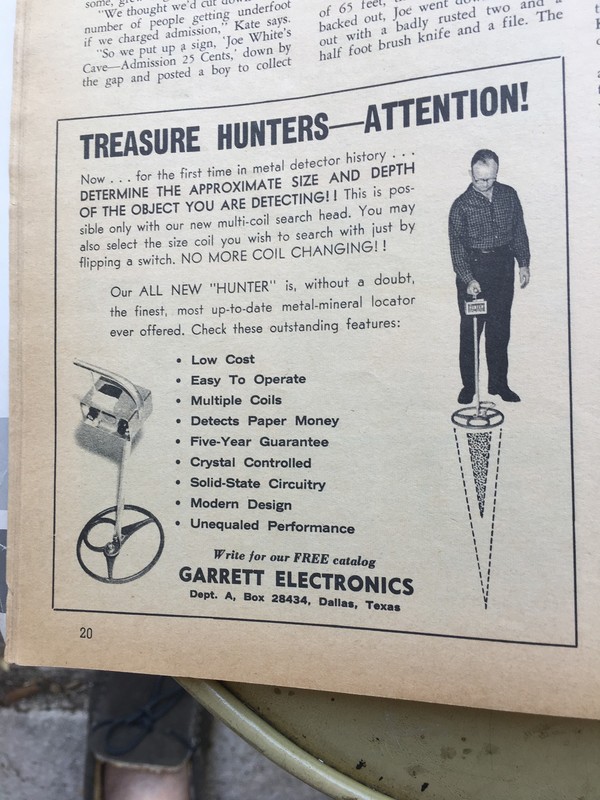
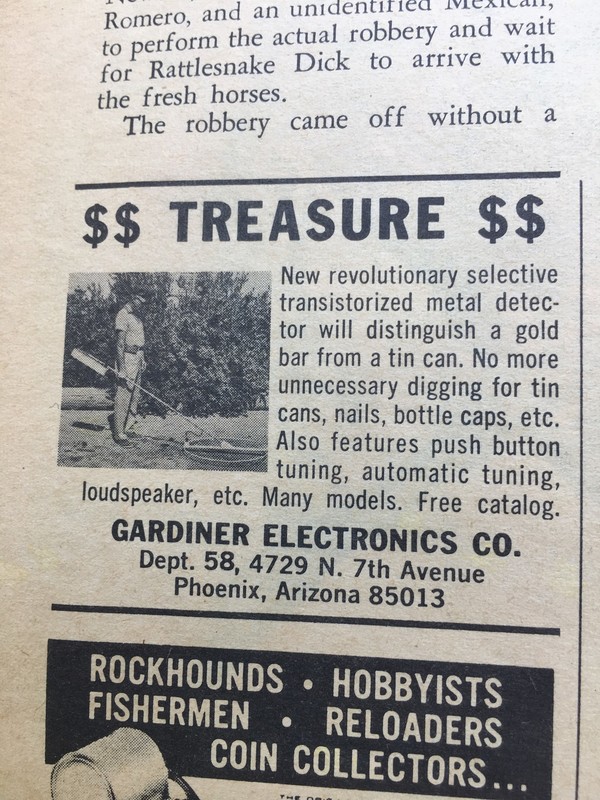
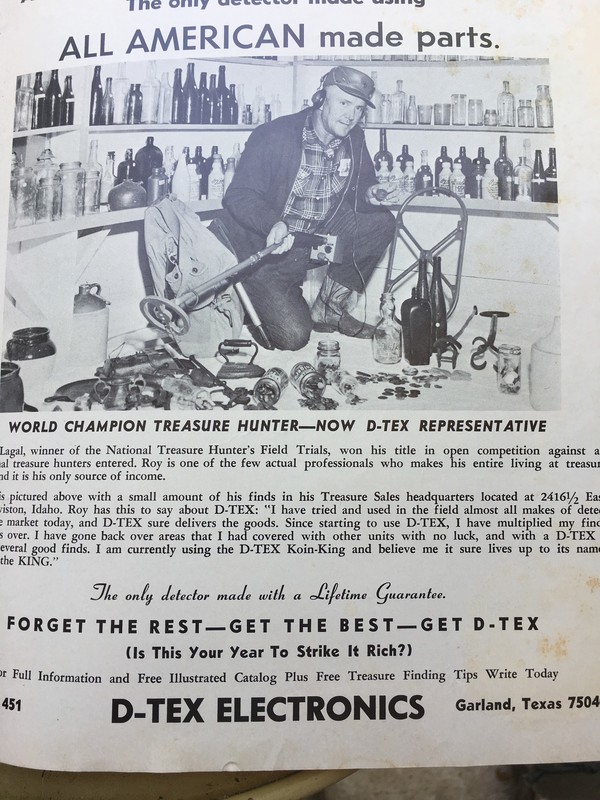
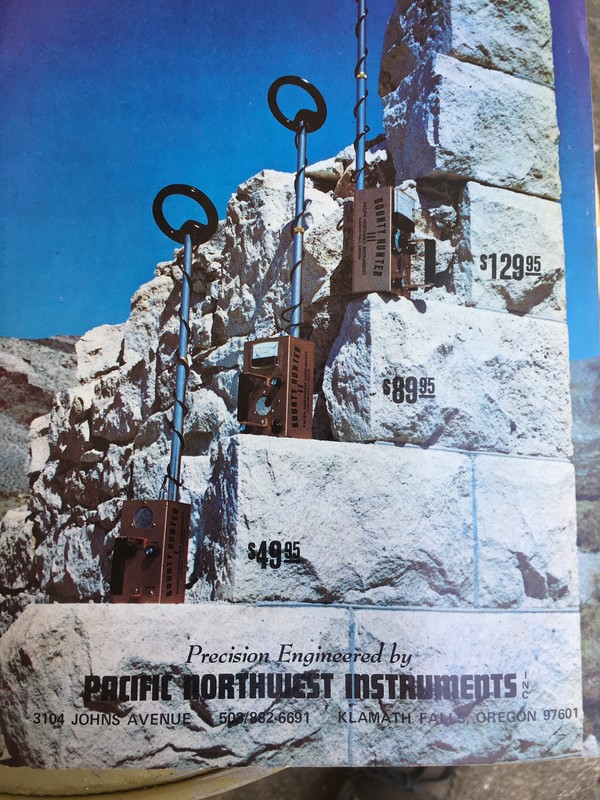


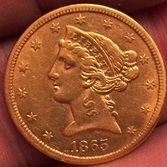




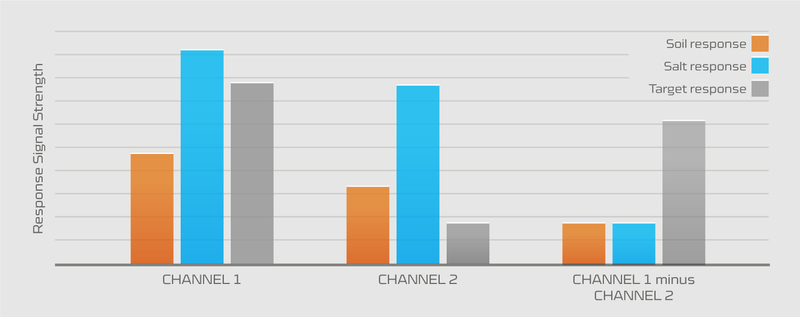



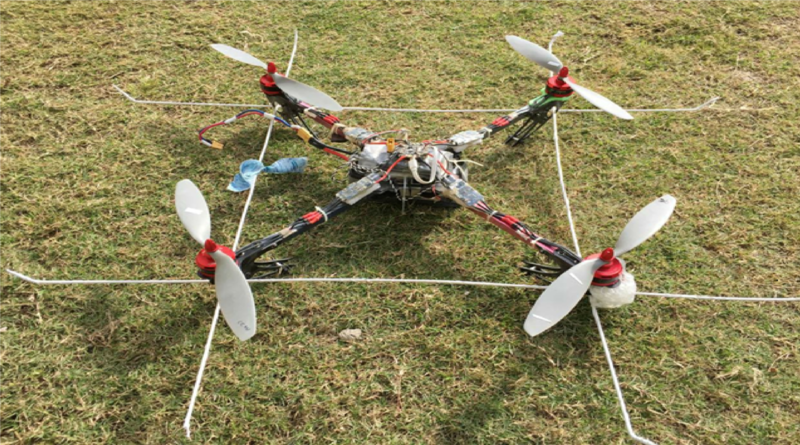
.thumb.jpg.c7214fa166c91b86e35403f780b2bc0f.jpg)





